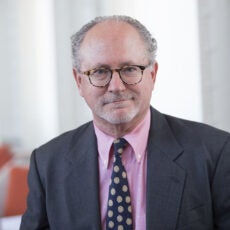
Put Your Money Where the Risk Is
My main takeaway from the rollout of the Greater Philadelphia Energy Action Team’s new “A Pipeline for Growth” report is this: the use of the word “molecules” in any discussion of energy policy should be avoided at all costs. It strikes me as the oral equivalent of trying to look smart by putting on a pair of eyeglasses you don’t need.
The report and its patrons have helpfully assembled lots of “known knowns” like pipeline maps and regulatory authority. They’ve also commissioned a good set of guesses regarding the “unknowable unknowns,” like how many jobs might appear if this and this and this happen at some point in the future.
But once again, we have a strategic representation of a business plan that makes its case based on enumerated estimates of benefits that are undenominated by any costs.
And this an equal-opportunity travesty. There is plenty of hand-waving on every side of this issue. The future job projections claimed for the Philadelphia Energy Campaign or for making solar panels in the city are based on the same arithmetic used in “Pipeline.” These point estimates originating from narrow interests do little to serve the broader public or our representatives in government.
This becomes especially important given the repeated calls made this week for a new public authority that would assume the risk for unrecovered costs of building new pipelines and other infrastructure. That risk, if incurred, raises very interesting opportunities for policy design and innovation. So interesting, in fact, that I’ve hesitated to raise the issues myself.
But now advocates for the energy hub have opened the Pandora’s Box of public sector investment. It is notable that public financing is not discussed in the report itself but only in the media interviews following the release of the report. So perhaps the spokesman is going rogue and the idea may well not have the endorsement of the Chamber and others involved in the report. In any case, we should examine some implications.
The transfer of risk to the public sector should not be based on guesses about benefits. It should be based on the assumption of liability.
The transfer of risk to the public sector should not be based on guesses about benefits. It should be based on the assumption of liability. In very general terms, this can take two forms: insurance and bonding. Neither of these is a substitute for regulations; instead think of them as tools for making regulations work better.
The risk of a pipeline leaking, an oil train exploding, or an investment not paying off can be hedged by buying insurance. The premiums paid for such insurance are lost to the covered party but can also help pay for the consequences of damages from an insured event.
But the problem with insurance is that it thereby partially insulates the covered party from the consequences of their own actions, creating what is known as moral hazard.
When facing new operational risks, say from the construction of additional pipelines or the impacts of future petrochemical facilities, the stronger protection may come from bonding. With a bond, the liable party deposits their own money into an account they cannot access. If the covered bad thing doesn’t happen, they get their money back with interest. This powerfully aligns the operator’s incentives to do all they can to manage operational risk. It also aligns a co-investor’s incentives to not over-promise jobs and health and environmental benefits in their pitches to public sector partners.
If the public takes on any financial or environmental liabilities, the advocates for those liabilities need to put their money where the public risk is. Strong regulatory requirements backed by appropriate bonding requirements should be the basis for any public participation in the energy hub as described in “Pipeline.”
Mark Alan Hughes
Director EmeritusMark Alan Hughes is director emeritus of the Kleinman Center. During his time as faculty director, he led the Center and wrote on topics ranging from deep decarbonization to the future of Philadelphia’s energy landscape.

